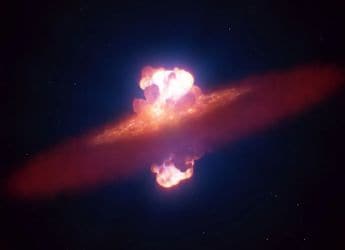- Home
- Mobiles
- Mobiles News
- Samsung Galaxy K zoom Launching Exclusively on Amazon India
Samsung Galaxy K zoom Launching Exclusively on Amazon India

The Amazon India teaser image shows a 'coming soon' tagline for the Samsung Galaxy K zoom with no word on the release date. Notably, the online retailer is also running a Galaxy K zoom contest for consumers that will end on July 13, which tips that the Galaxy K Zoom might see the light of the day in mid-July. The news broke out with a tweet from Amazon India about the new camera-focused handset.
Initially announced in April, the Galaxy K zoom is the second camera specialised-smartphone from the company, the first being the Galaxy S4 Zoom.
The Galaxy K zoom sports a 20.7-megapixel BSI CMOS sensor at the back accompanied by a Xenon flash and also features optical image stabilizer (OIS) for low-light imaging. The rear camera supports 10x optical zoom. The rear camera comes with some advanced camera usability features and functions, including AF/AE Separation (/Auto Focus/ Auto Exposure Separation); Pro Suggest mode that offers 5 optimized filter settings, Selfie Alarm offers users to take timed selfies. The Galaxy K zoon also houses a 2-megapixel front-facing camera.
When compared to the Galaxy S4 Zoom (Review | Pictures) that came with a 4.3-inch Super AMOLED qHD display, the Galaxy K zoom features a 4.8-inch Super AMOLED HD (720x1280 pixels) display.
The Galaxy K zoom runs Android 4.4 KitKat, much like Samsung's 2014 flagship Galaxy S5 (Review | Pictures). Other specifications include a hexa-core processor (a quad-core 1.3GHz and a dual-core 1.7GHz), 2GB of RAM, 8GB inbuilt storage expandable via microSD card (up to 64GB), and a 2430mAh battery. The Galaxy K zoom will be available in two variants - LTE and 3G - while other connectivity options include Wi-Fi, Bluetooth, Micro-USB and NFC.
Get your daily dose of tech news, reviews, and insights, in under 80 characters on Gadgets 360 Turbo. Connect with fellow tech lovers on our Forum. Follow us on X, Facebook, WhatsApp, Threads and Google News for instant updates. Catch all the action on our YouTube channel.
Related Stories
- Samsung Galaxy Unpacked 2025
- ChatGPT
- Redmi Note 14 Pro+
- iPhone 16
- Apple Vision Pro
- Oneplus 12
- OnePlus Nord CE 3 Lite 5G
- iPhone 13
- Xiaomi 14 Pro
- Oppo Find N3
- Tecno Spark Go (2023)
- Realme V30
- Best Phones Under 25000
- Samsung Galaxy S24 Series
- Cryptocurrency
- iQoo 12
- Samsung Galaxy S24 Ultra
- Giottus
- Samsung Galaxy Z Flip 5
- Apple 'Scary Fast'
- Housefull 5
- GoPro Hero 12 Black Review
- Invincible Season 2
- JioGlass
- HD Ready TV
- Laptop Under 50000
- Smartwatch Under 10000
- Latest Mobile Phones
- Compare Phones
- Vivo Y500 Pro
- Realme GT 8 Pro Aston Martin F1 Limited Edition
- Huawei Mate 70 Air
- Moto G57
- Moto G57 Power
- Motorola Edge 70
- Moto G Play (2026)
- Moto G (2026)
- MacBook Pro 14-inch (M5, 2025)
- Asus Vivobook S16 (S3607QA)
- iQOO Pad 5e
- OPPO Pad 5
- Noise Diva 2
- Noise Halo 2
- Acerpure Nitro Z Series 100-inch QLED TV
- Samsung 43 Inch LED Ultra HD (4K) Smart TV (UA43UE81AFULXL)
- Asus ROG Ally
- Nintendo Switch Lite
- Haier 1.6 Ton 5 Star Inverter Split AC (HSU19G-MZAID5BN-INV)
- Haier 1.6 Ton 5 Star Inverter Split AC (HSU19G-MZAIM5BN-INV)


















